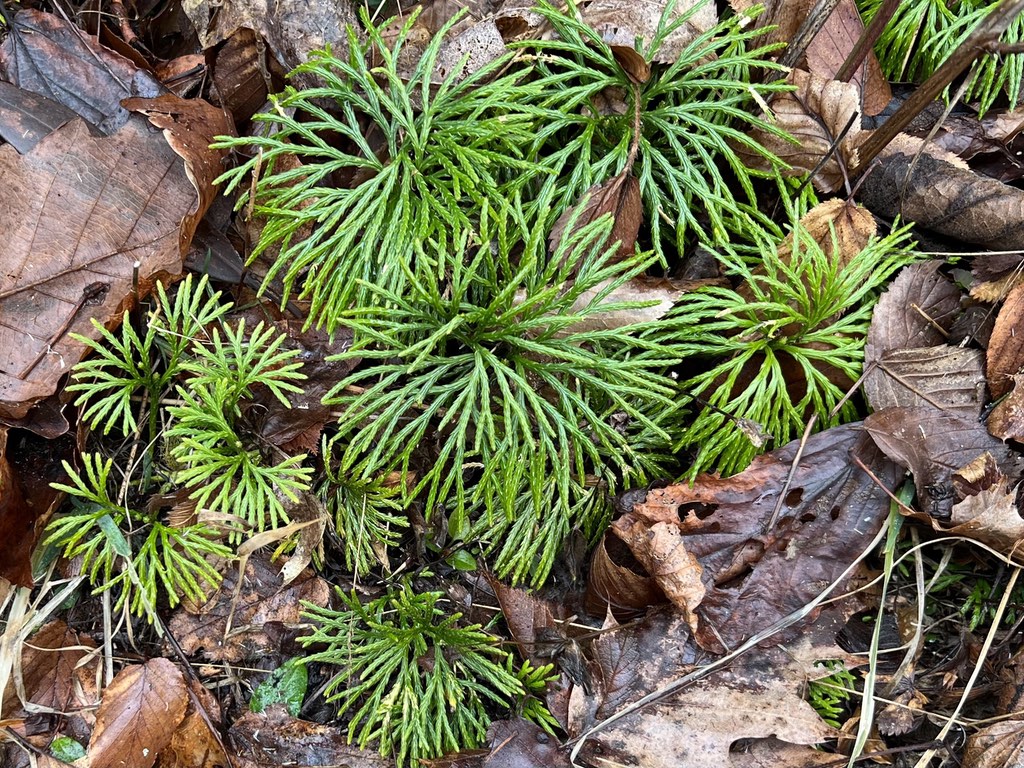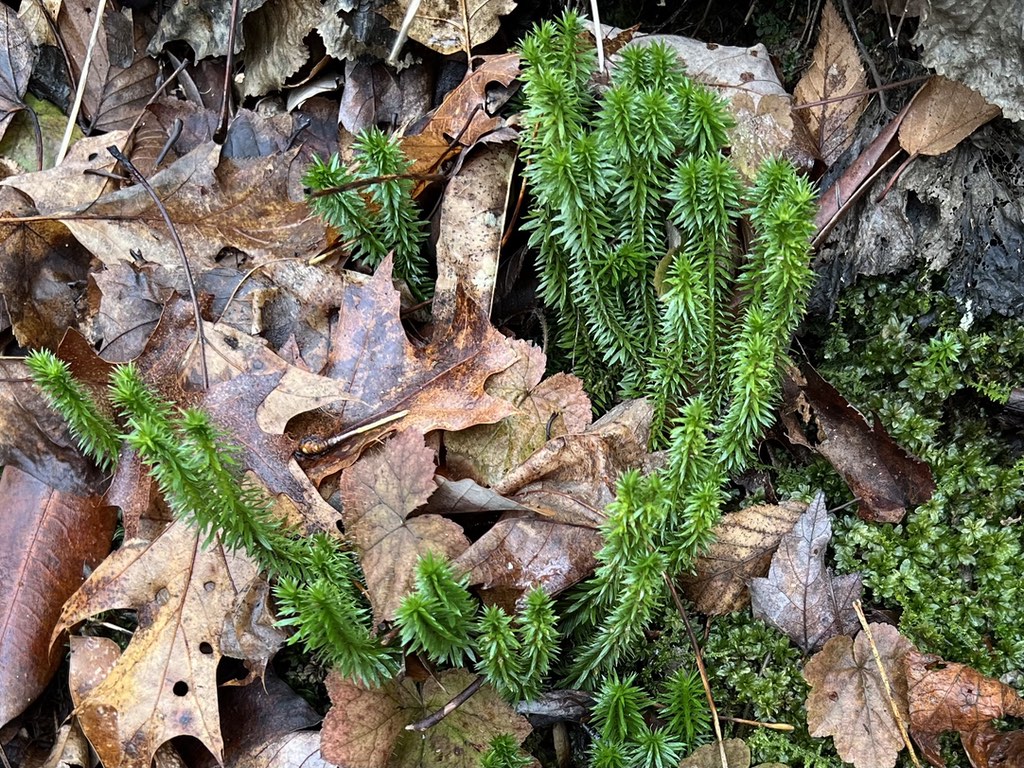LYCOPODS
12/31/22
On an overcast hike yesterday at Standing Indian Mountain in North Carolina, the bright green of two small plants stood out against the dreary winter browns. Both are lycopods, minor players in today’s world, but the dominant plants millions of years ago in the Pennsylvanian Period.
The first of these two plants is Fan Clubmoss (Diphasiastrum digitatum, formerly called Lycopodium digitatum). It’s a low spreading plant with radiating fan-like flattened branches. These fans are held mostly parallel to the ground, and each fan is about 2–3" across. Fan Clubmoss also goes by the names Southern Ground-Cedar, Fan Ground-pine, and Southern Running Pine, but despite those names, it is no relation to cedars, pines, or any conifer. Clubmosses are in the family Lycopodiaceae.

The second of these is Shining Firmoss (Huperzia lucidula, formerly called Lycopodium lucidulum). This is also a low plant, but the shoots grow upwards as a small tower surrounded by elongate radiating leaves. The shoots are less than an inch in diameter and are up to about 6" tall. Firmosses are in the family Huperziaceae, and despite their name, they are not mosses.

Both species are reportedly common in well-drained acidic forests, which matches the oak-hickory forests developed on silicate (quartz and feldspar) bedrock in this part of North Carolina.
Clubmosses and firmosses are vascular plants called lycopods (also called lycophytes), which also include the spikemosses and quillworts. Being vascular plants, they are unrelated to mosses. Other major groups of vascular plants include ferns (Polypodiophyta), pines and other conifers (Pinophyta), cycads (Cycadophyta), gingkos (Ginkgophyta), and flowering plants (Magnoliophyta, the angiosperms). In other words, lycopods are a distinct group of plants unlike any other type of plant alive today.
Lycopods are not very diverse today. North Carolina has only 3 species of firmosses, 13 species of clubmosses, 10 species of quillwort, and 6 species of spikemoss, not counting hybrids (see the list of vascular plants of North Carolina). All are small and relatively inconspicuous.
In the geologic past, especially during the early Pennsylvanian Period about 310–320 million years ago, lycopods were the most dominant plants, being diverse and abundant. This was especially so in tropical swamps, and these vast peat swamps produced much of the coal mined in the eastern United States. During the Pennsylvanian Period, some lycopods grew as trees up to 130' tall, and their fossils are common.